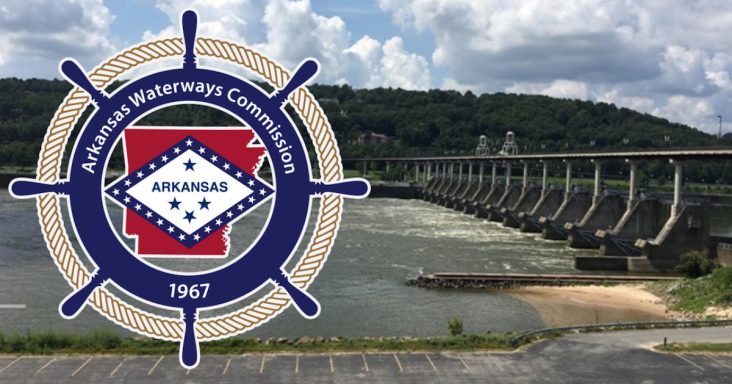Arkansas Waterways Commission officials say the agency ‘needs to be recognized’
by May 28, 2024 2:01 pm 857 views

Arkansas Waterways Commission officials are concerned about the “small staff of two” getting lost in an organizational shuffle, but are optimistic that state leaders understand the need to protect a group that promotes and protects the state’s waterways.
The Arkansas Waterways Commission was established in 1967 and, for several decades, reported directly to the governor. However, during a state government realignment under Gov. Asa Hutchinson, it was placed within the Arkansas Department of Commerce.
The commission “is the sole state agency responsible for developing, promoting and protecting waterborne transportation in Arkansas. The Commission also promotes economic development for ports on the five commercially navigable rivers of the state: The Arkansas, Mississippi, Ouachita, Red, and White Rivers,” according to the commission.
Powers and duties of the commission include studying and coordinating efforts to promote the ongoing development of the state’s five waterways, helping state and federal agencies promote public safety on the waterways, being part of other state agency decisions about waterway changes or developments, and representing the state in working with federal officials on waterway development and maintenance. (Link here for the complete list of power and duties of the commission.)
‘NEEDS TO BE RECOGNIZED’
During a May 20 meeting of the Arkansas-Oklahoma Port Operators Association, Commission Chair Bryan Day and Commission Director Cassandra Caldwell discussed efforts to ensure the commission remains relevant. Day, who is president of the Little Rock Port Authority, said Arkansas Secretary of Commerce Hugh McDonald “is doing a really good job” working to reconfigure the entire commerce department “so that it’s not so big and cumbersome.”
“I think commerce is such a large department that this small staff of two gets lost in the large organization,” Day said.
Day and Caldwell said in other states the waterway commission is either independent or within a state transportation agency. For example, the Oklahoma Waterways Advisory Board is part of the Oklahoma Department of Transportation.
“It works really well in Oklahoma. In fact, the Department of Transportation in Oklahoma allocates money to the waterways. The Department of Transportation in Arkansas does not. So, they recognize the value of that there,” Day told Talk Business & Politics.
Day didn’t offer his preference when pressed about where the commission should be located.
“I don’t know where it belongs, but I just know that it’s very important to Arkansas, and it needs to be recognized for the value that it brings to the state and all five rivers that it represents,” he said.
Caldwell, who noted that Arkansas has more navigable waterways than all states except Alaska and Florida, also declined to discuss a preference.
“It’s not going to be up to me, so I’d prefer not to speak on it. I don’t have a preference where we go as long as we continue to be able to do what we need to do,” she said.
The Arkansas Department of Commerce provided this statement to Talk Business & Politics: “The Arkansas Waterways Commission plays a vital role in protecting our state’s water transportation and promoting economic development for local ports. There are no immediate plans to move the commission out of the Arkansas Department of Commerce.”
ECONOMIC IMPACT
The most recent data available on the economic impact of the McClellan-Kerr Arkansas River Navigation System (MKARNS) is from October 2015, and it was authored by researchers at the Mack-Blackwell Transportation Center at the University of Arkansas.
The report found that MKARNS in Arkansas and Oklahoma supported 55,872 jobs annually and had a tax impact of $289 million a year — $168 million in Arkansas. The report also found that all activities along MKARNS generated $8.5 billion in sales.
“Sales is defined as the revenue generated by firms whose operations are affected by the MKARNS. The total MKARNS impact on Sales is $8.525 billion nationwide,” noted the 2015 report. “On its own, the Arkansas segment of the MKARNS nationally contributes $4.535 billion, while the Oklahoma MKARNS segment nationally contributes $4.077 billion. The combined impact is slightly less than the two segment impacts combined due to shared freight benefits.”
The MKARNS is 445 miles long and stretches from the confluence of the Mississippi River to the Port of Catoosa near Tulsa, Okla. The controlled waterway has 18 locks and dams, with 13 in Arkansas and five in Oklahoma. The river has five commercial ports: Pine Bluff, Little Rock, Fort Smith, Muskogee, Okla., and the Tulsa Port of Catoosa in Oklahoma.
